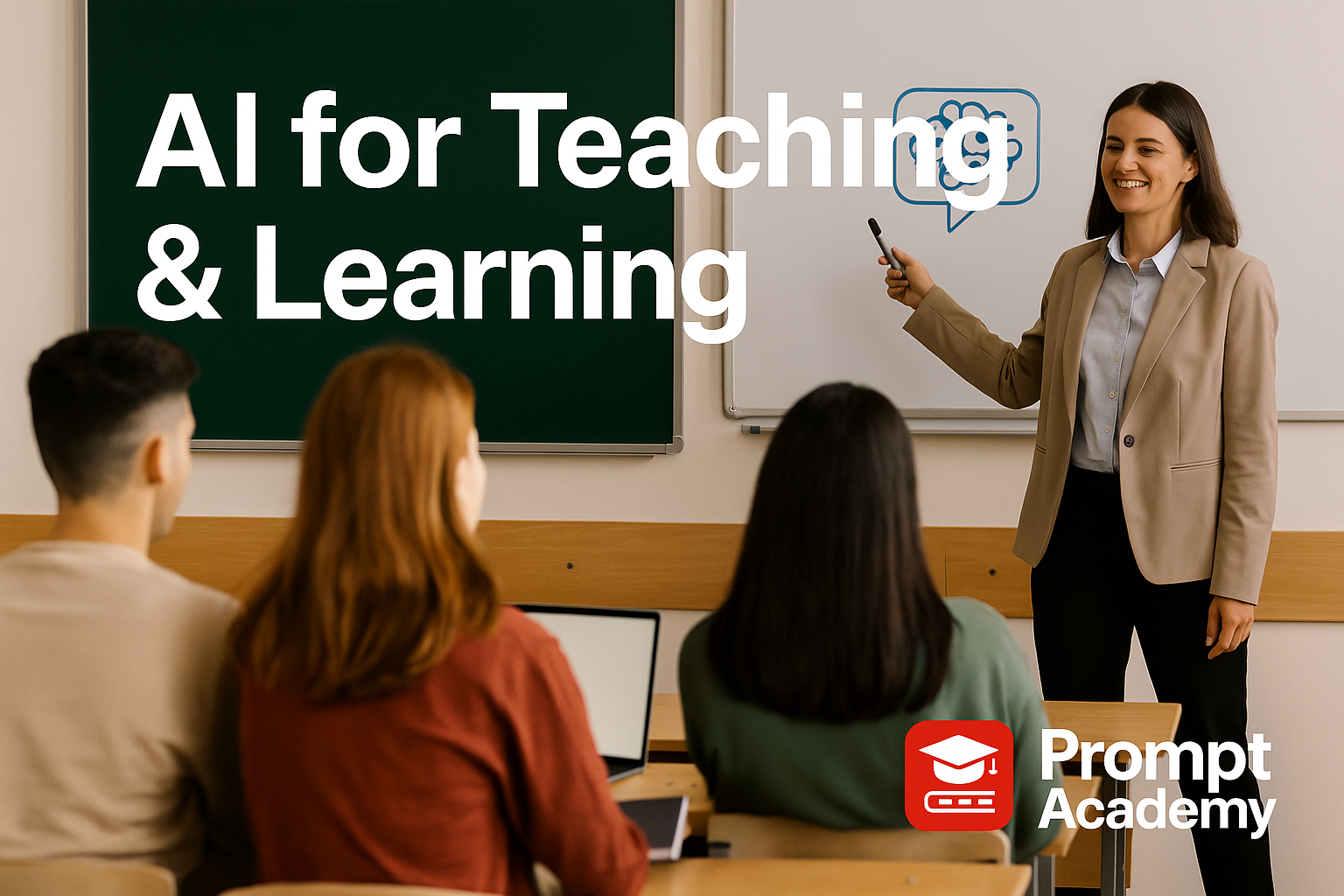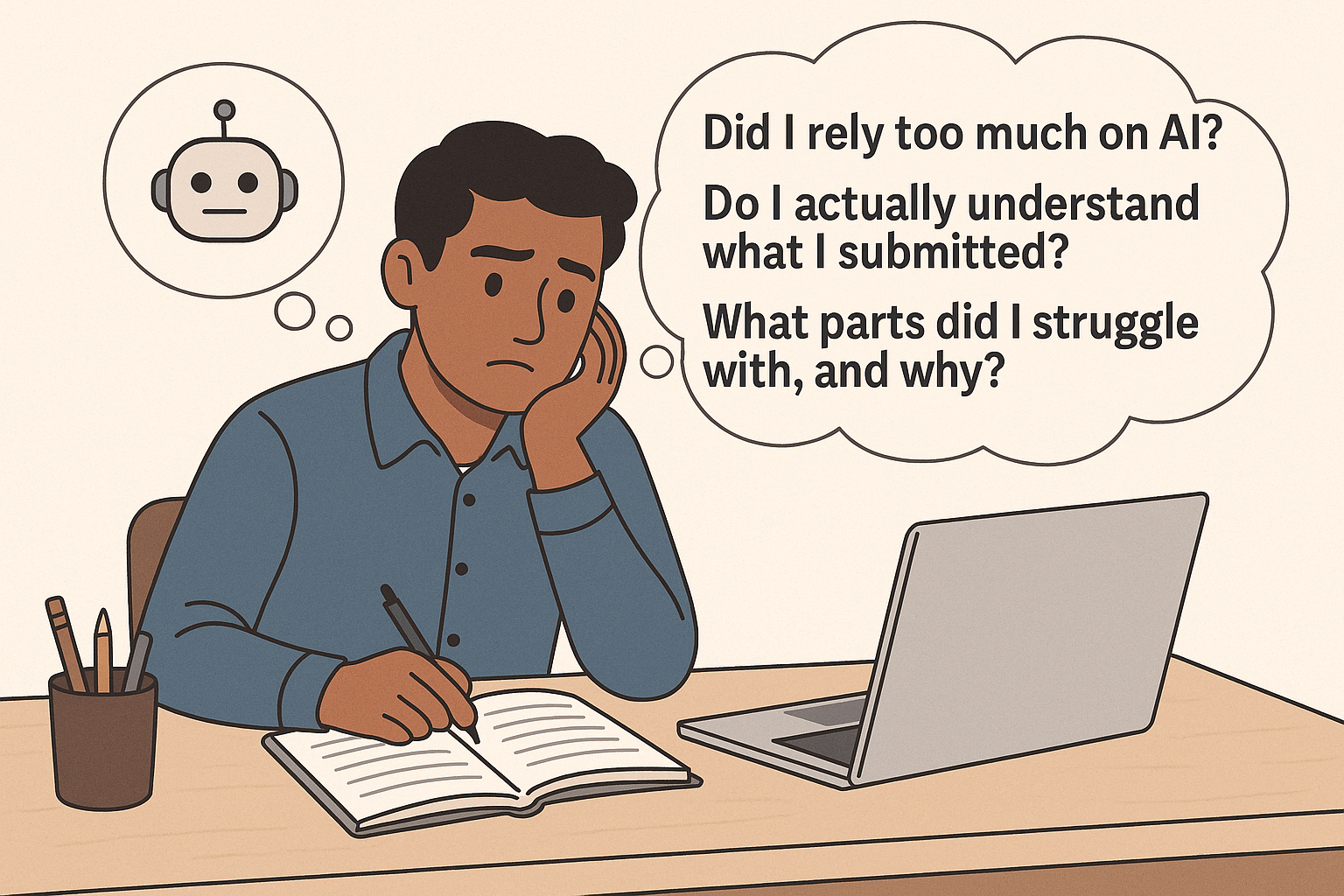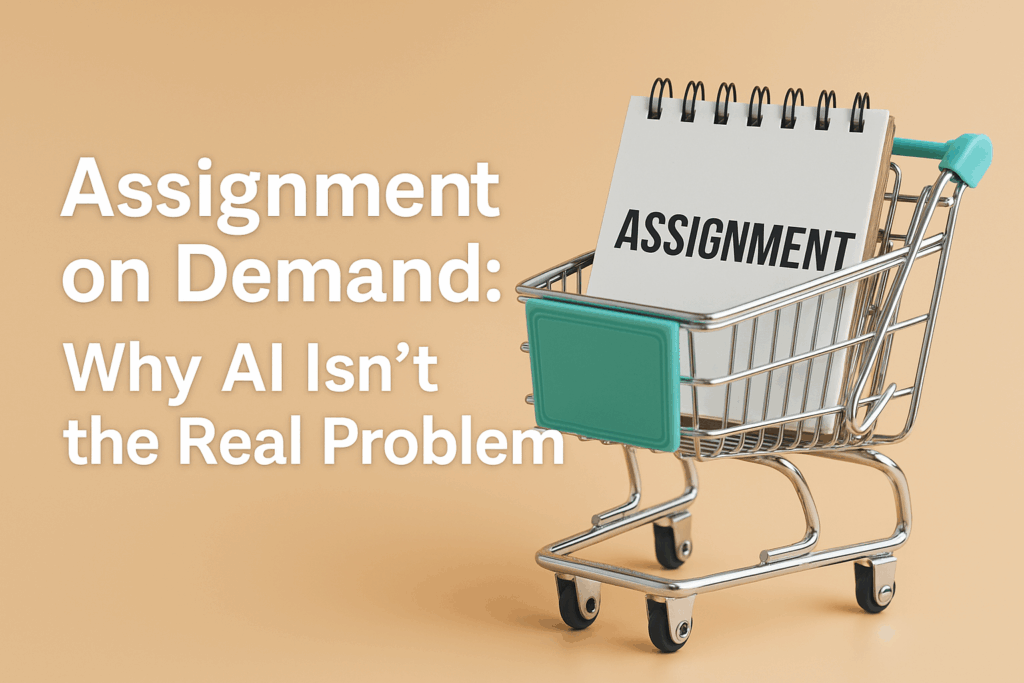Educators & AI: Real Stories, Strategies and Reflections
By Ts. Dr. Suhailah Mohamed Noor

✨ Welcome to AI for Teaching & Learning
“I didn’t begin as an AI expert. I was just a lecturer who wanted her students to think — not just submit beautifully written answers generated in seconds.”
That’s where my journey with AI in education started. Not with mastery, but with concern. When I began seeing student work that was polished yet empty of voice, I knew something had to change — not just in students, but in how I design, assess, and teach.
This space isn’t about technical tutorials. It’s about reflection, experimentation, and sharing what works in the real classroom.
Here, I document:
- Real stories from my own teaching practice,
- Honest reflections about what worked (and what didn’t),
- AI-aware strategies that demand student thinking — not just clean outputs.
If the “past Dr Sue” could begin from confusion, hesitation, and curiosity, I’m sure you can too — regardless of where you’re starting. The key is this: don’t stop thinking just because AI can.
Let’s teach with AI, not fear it. Let’s lead, not just adapt.
Welcome to AI for Teaching & Learning.
This is about more than tools. This is about reshaping the future of education — and you’re part of it.
If the first reflection explored the emotional and ethical dilemma of AI-generated writing, this next piece dives deeper into educational design — challenging the way we frame assignments and assessments in a post-AI world.
🧠 No Need to Block 100%: Give Students Room to Think
When educators push to AI-proof everything, what are we really protecting — marks or minds?
In this bold reflection, Ts Dr Suhailah questions the widespread fear around AI in education. Drawing from her experience in engineering education, she reveals how take-home assignments often make up only a small portion of assessments — yet they become the main target of AI restrictions.
This article invites educators to rethink assessment design, not by banning AI, but by building thinking spaces where AI supports — not replaces — the learner’s voice.
📝 This article is written in Bahasa Melayu.
🔗 Read the full reflection here

🧠 Beautiful, But Honest: A Reflection on AI and Ethical Assessment
While many rush to rewrite AI-generated text just to “avoid detection,” is that real learning?
In this honest reflection, Ts Dr Suhailah shares her perspective on academic integrity, the psychological power of educators, and why the focus shouldn’t be on perfect language — but on the student’s thinking process.
📄 This article is written in Bahasa Melayu.
🔗 Read the full reflection here

🧠 Reflection: When AI Is Misused, Who Is Truly Failing?
In a world where students can complete assignments in seconds using AI, what happens to integrity, critical thinking, and real learning?
This short reflection challenges educators to rethink task design — not to ban AI, but to demand more human thinking.
📄 This article is written in Bahasa Melayu.
🔗 Read the full reflection here

🧠 Reflection in the Age of AI
Why reflection is essential in AI-aware assessment — helping students and educators rediscover real thinking.Read More →

What AI Still Can’t Do — A Lecturer’s Guide
Explore the human elements AI can’t replace — and how lecturers can design learning that brings it out.Read More →

Assignment on Demand: Why AI Isn’t the Real Problem
Banning AI won’t fix cheating. But smarter, AI-aware task design just might. Let’s rethink our approach.Read More →